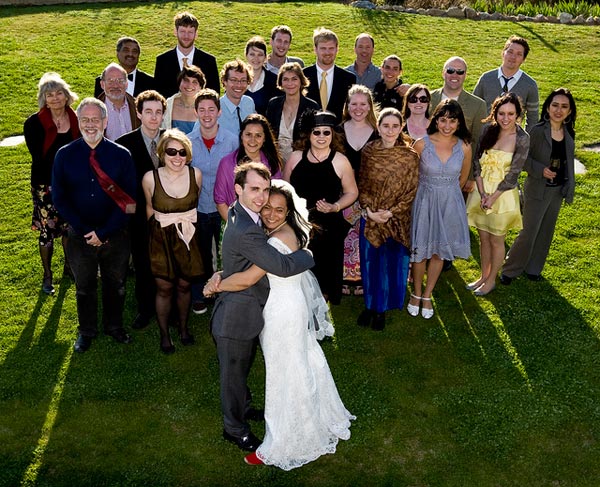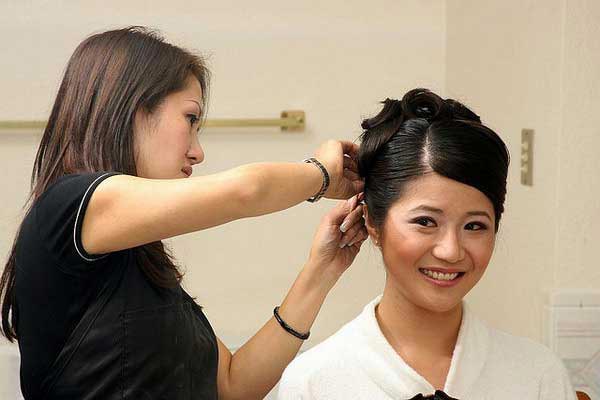By Yassine Hakimi at Photopoly
This article is full of useful information and even better still, very easy to follow.
Wedding photography is a profession which requires knowledge and talent and which can be very challenging for a photo enthusiast.
Nevertheless, if you are quite an avid amateur photographer and you have some friends planning their wedding, it’s very likely that they will ask you to be the photographer for this special occasion.
This article will provide you with some tips to help you achieve great results when documenting a wedding.
 forbesphotographer
forbesphotographer
Preparation:
In wedding photography, preparation is as important as the shooting stage. If you are well prepared you won’t have any problems when taking the pictures and you won’t miss any photo opportunity. As a wedding photographer, you don’t have the right to make mistakes.Talking to the couple:
Communication is very important in wedding photography. Talk to the couple to agree exactly on what they need and also ask about the most important people in the ceremony (parents, and close family). Getting to know the people you are going to shoot will make it easier on the wedding day. Also, tell them to take their time and to not rush things during the ceremony. This will get the people to appreciate the ceremony and will give you the opportunity to document the occasion successfully.Scouting the location:
During the preparation stage of wedding photography, it’s important to know where you are going to take photos. So, you need to visit the wedding venue a day or too before the wedding to familiarize yourself with the location and to choose the spots from where you will take photos.Another part of location scouting process is to study the light you are going to deal with on the wedding day. So, follow weather forecast channels to determine how the weather will be (sunny, overcast sky). While the weather can always be unpredictable, you can still determine the direction of the sunlight with precision. So, while on location try to find out the direction of the sunlight in different times of the day and then try to figure out the best times to take pictures in the different spots. Scouting the location will also help you determine the equipment you will need.
Wedding Photography Equipment:
Following is a non-exhaustive list of the equipment that you might need for wedding photography. Remember though, don’t over load yourself with things you don’t need. Only take what will help you succeed in your mission.- A DSLR with a standard 18-55mm kit lens can be all you need for a wedding. You can always bring some telephoto lenses, but you won’t need them in most of the cases as you will be really close to your subjects most of the time. However, a wide angle lens can be crucial for situations requiring to take a photo of a very large group in a relatively small space.
- Lots of storage: Consider taking with you at least an 8 Go memory card, as you will be shooting hundreds of photos and you need not to worry about such things as not having enough memory card space left.
- A flash: You will need it in low light situations, especially in interiors, but it can be also useful for outdoor shots.
- A tripod: useful for group photos and for taking photos at slow shutter speeds.
Prepare your equipment the night before the wedding: The main reason behind forgetting something is usually late preparation. So, it’s better to check your equipment the night before the wedding. Make sure your batteries are fully charged and your gear is clean. A good way to guarantee you didn’t forget anything is to write a list of what you need and to go over it item by item before closing your camera bag.
On The Wedding Day:
You need to be aware of the huge responsibility you are taking when you delve into wedding photography. When you see photos of other weddings taken by professional photographers, it may seem easy to take similar photos with your photographic talent. But the difference between an amateur photographer and a professional wedding photographer is that the former takes photos of subjects he/she likes and in light conditions that are optimal most of the time, while the latter doesn’t have that luxury. The wedding photographer needs to deliver great results whatever the conditions he/she works in. This makes wedding photography a great exercise for the amateur photographer to learn patience and polyvalence, as a wedding photographer will have to be able to take posed portraits, group photos, candid photos and many other types of images.Portraits and official photos: Portraits Bride-Joshua and Kathleen Wedding by Jacob & Kiki Hantla
Portraits Bride-Joshua and Kathleen Wedding by Jacob & Kiki Hantla
In wedding Photography, these are the keepers. They are the photos which will stay in the family photo albums or will be hang on a wall for decades. So you need to take care of getting them perfect, or you will have to deal with a bunch of angry parents and grandparents
During the wedding day the time that can be devoted to posed portraits is usually small. That’s why many photographers suggest to the newlyweds to take these shots on a separate day. If you can’t do that, you will have to do with what you got. This is where you preparation pays off. Since you scouted the location before the wedding, you will know exactly where to take the portraits, which angle to choose and which lens to use. So, all you have to do is to manage to get the newly-wed couple to where you want them and to try to snap a few shots quickly. Also, don’t forget to take some photos of meaningful details such as the wedding rings or the couple holding hands…
Group and family photos:
Andy & Lyra’s Wedding by Charlie BrewerGroup and family photos are challenging and hard to shoot in the context of wedding photography. You will usually find yourself in situations where the shadows cast by the sun are not very flattering ( if shooting outdoors) , where the group you are photographing is not paying attention to you or where there is always someone “ruining” the shot by blinking eyes or a weird expression. So, consider placing the group wisely. Try to place them with the sun slightly to the side so that it won’t be a bothering thing for them (blinking). Also try to find a neutral background that won’t be distracting. And, don’t forget to take as many photos as possible to make sure you get at least one good shot. Also, try and take candid group photos. These photos will be more realistic and will convey the real atmosphere of the wedding.
Documenting the different stages of the wedding:
Wedding Preparations by E.tA big part of wedding photography consists of documenting the different stages of the wedding. This includes the newlyweds getting ready, (at the hairdresser, wearing the dress and the suit) the actual wedding ceremony, a wedding dinner or party, etc. And, you need to be everywhere to cover all the different moments of this special day.
Weddings are very rich with photo opportunities, but be aware of getting carried out in the shooting craze without really thinking about what you are capturing. It’s better to learn how to grow some reflexes, to anticipate the moments which need to be photographed and to be ready to grasp the opportunity before it’s over. It’s more satisfying to go back home with some perfect shots rather than a huge number of trivial snapshots.
Also, don’t play the paparazzi role. The couple you are shooting will be probably stressed and they won’t like it if you are too close of them throughout the ceremony. Learn to keep some distance and try to use Zoom lenses to avoid ruining the beauty of some scenes.
Finally, when the atmosphere is looser and more relaxed (usually after the main ceremony) grasp the opportunity and get some close ups and some candid shots of the different situations you will find (tears, smiles, hugs)
Dealing with light in Wedding Photography:
You will deal with different light conditions in wedding Photography. But this shouldn’t be of big concern to you, as you need to be in control and should try to get the best results whatever the situation you are shooting in.Here are some tips that might help you in dealing with light:
- If the shadows produced by the sun are very harsh, consider using some fill flash to avoid them.
- The lighting in interior settings isn’t always good, so push the ISO higher while keeping an eye on the noise levels in the photos.
- You can also use the flash in interior settings, but try not to use it directly on your subject. You will get better results if you bounce it on a wall or the ceiling.
- Pay attention to the exposure. The bride’s dress is usually of a dazzling white which can trick the camera’s light meter. It’s advisable to underexpose a little bit the shots in this case.
Here are some inspiring examples of wedding photography
ring / yüzük by Caucas
The wedding by blixyklingi
The wedding by Petrusloo
wedding poetry by Sssssergiu
Wedding by Inextremo
Wedding by 0ry0n
Wedding Stories by HoKosTo
Read more: http://www.photopoly.net/wedding-photography-tips/#ixzz1SWJnCC63

No comments:
Post a Comment